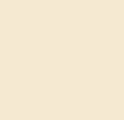 |

Dark Enough to see the Stars in a Jamestown Sky is geared toward adults or high school students, but middle schoolers may also enjoy the story. (The youngest reader that I know of was 8 years old.) The content is appropriate for all.
School Library Journal recommended Dark Enough to See the Stars in a Jamestown Sky as one of only two fiction books on Jamestown for grades 9 and up.

Summary of the Three Books
Dark Enough to See the Stars in a Jamestown Sky is set during the years 1592 to 1609 in England and 1609 to 1611 in Virginia. This novel covers the reasons that nearly one hundred women and children came to Virginia in 1609, the Second Charter of 1609, shipboard life, the hurricane at sea that the settlers endured, the loss of the flagship, the Starving Time and subsequent wars with the natives.
When the Moon Has No More Silver picks up where the first novel leaves off, covering the years 1610 to 1620. During these years, the Virginia Company seeks to abandon Virginia, viewing it as a non-profitable investment. At last, the Company agrees to five more years, until 1616, to see what Virginia can do. The Spanish threat of war on Virginia and the death of young of Prince Henry, an ardent support of the colony, caused many remaining investors to lose heart. The settlers, feeling forgotten, must labor under stringent martial law with provisions sent to them of rotting food. Unable to leave and forbidden to plant, the colonists themselves lose a great deal of hope. The colony moves upriver to Henricus and Bermuda Hundred. Captain Samuel Argall kidnaps Pocahontas, who later marries John Rolfe. New settlers are born, contagion strikes, Lord De La Warr dies, and a comet with a fiery tail causes the whole world fear. Argall, then Governor, runs a piracy operation from Virginia shores with unhappy consequences. The colonists receive permission for the first General Assembly and the first land grants.
A future book, The Sun is But a Morning Star will be set in the years following 1620 and until the end of the lives of some of Jamestown’s first women during the late 1640’s. This third book will cover the massacre of 1622, the typhoid epidemic of 1622 to 1623, the sensational trial of Cecily Bailey Jordan for breach of promise, and the settlers overthrow of a corrupt Virginia governor—the first such rebellion in the future United States of America.
History—Real or Fiction?
I never alter known history. I weave the story through the history as it was. I believe that if I change history, I am no longer telling the same story. However, given that there’s much we don’t know about Virginia’s early history, I lay out the pieces (like working a puzzle) and attempt to fill in the gaps. My method is to ensure that events are consistent with the mores of the time and also were possible and plausible. I also like to consider how the settlers might have reacted to events as we know they unfolded. These early years are filled with drama and pathos—there’s little I need to imagine to add to it!
To add to the authenticity, I attempt to keep the language of the story true to the period. In When the Moon Has No More Silver, for example, the settlers never say that they “kidnapped” Pocahontas. They say she was captured or stolen. The word “kidnap” is from a later period.
Resources and Topics
These novels are an excellent tool to help upper middle schoolers, high schoolers (or anyone) learn more about:
- the reasons for English exploration of the New World and the climate in England at that time.
- the political leaders involved in early Jamestown, as most (including John Smith) are “still around” during the setting of the book (1592-1609 in England and 1609-1611 in Jamestown). I portrayed the leaders as human beings and kept their personalities as true as possible to what period documents suggest. I did find each of them to have distinctive traits.
- the uncertain politics and how close Jamestown came to being yet another failed English colony.
- the culture, setting, and daily life of the Jamestown adventurers.
- the role of women and children in the early days of the colony of Virginia.
- shipboard life during this time.
- Dark Enough to See the Stars in a Jamestown Sky demonstrates the complex reasons that the Starving Time occurred. The reason most often given—“the settlers were too lazy to hunt or plant”—is simply not true. Could the settlers have prevented the Starving Time? This is a good topic for discussion.
- When the Moon Has No More Silver, follows the settlers through the uncertain years, 1610 to 1620, when the Virginia Company lost all hope that Virginia could survive. Rarely mentioned is that only fifty-five settlers came to Virginia between the years 1612 to 1617. What occurred during these lost years? This book also covers:
- The Spanish threat (yes, it was real).
- Martial Law—what was it? Why was it so hated?
- The settlements of Henricus and later Bermuda Hundred
- The kidnapping of Pocahontas and her later marriage to John Rolfe
- The addition of babies to the settlement
- Governor Samuel Argall’s piracy from Virginia’s shores
- Turmoil at Virginia Company headquarters
- The death of Lord De La Warr
- The knighting of George Yeardley as a way to combat Argall’s treachery
- The first General Assembly
- The arrival of the first Africans—how did this occur?
- The long-awaited first land grants
Historically accurate and fact-based. Woven throughout the two books:
- Actual settlers – men, women, and children
- Political leaders
- Religious issues, such as the Protestant Reformation
- Laws and Charters
- Wars (conflicts in Europe as well as Indian conflicts)
- Native American leaders
- Native American language, dress, food, and customs
- Tribal names and relations
- English foods, customs, dress, and spoken language – in England and at Jamestown
- Ballads and musical instruments of the time
- Popular proverbs from the time
- 125 literary quotations and poems used as chapter openings and within chapters
- Even bible references are from the Geneva Bible (in use until 1611) unless the reference is too awkward; then the King James version is used.
Additional Resources in the back of Dark Enough to See the Stars in a Jamestown Sky include:
- Glossary
- 3 maps
- What’s Fact, What’s Fiction?
- A “Who’s Who” of Virginia political personalities (John Smith, George Percy, George Yeardley, etc.)
- Virginia Indian tribes – the basic tribal groups and their locations
- Long-term Jamestown Starving Time survivors—what happened to them? To my knowledge, this information is not collected anywhere else.
Additional Resources in the back of When the Moon Has No More Silver include:
- Glossary of English words
- Glossary of Native American words
- 3 maps
- What’s Fact, What’s Fiction?
- A “Who’s Who” of Virginia political personalities (John Smith, George Percy, George Yeardley, etc.)
- Virginia Indian tribes – the basic tribal groups and their locations
- Table identifying up to 50 of Virginia’s 65 English women and children.
- Where did Lord De La Warr die? Untangling the confusing stories.
- The early Virginia plantations today.
- How much did the Virginia Company lose? Values of pounds in today’s U.S. dollars.
Discussion questions based on Dark Enough to See the Stars in a Jamestown Sky:
- What was the original reasoning behind the Ulster Plantations? Why didn’t they work?
- Why did the English consider the Spanish such a threat, even at Jamestown?
- How did the Dutch Wars play into the settlement of Jamestown, particularly in 1609?
- Do you think Joan had a choice as to whether she went? If you said yes, would you have gone if you were she? Why or why not?
- What factors lead to John Smith’s sudden departure of Jamestown?
- Was Percy the best choice to take Smith’s place as President? Was he a successful leader? Why or why not?
- What factors played into the Starving Time? Do you think it was preventable?
- What actions show Sir Thomas Gates to be a strong leader? (Bonus: what trait did he exhibit that was unusual in a military man of his time? – email me for the answer!)
- Were the Laws Divine Morall and Martiall too harsh or exactly what the struggling colony needed?
- Fun question (not in book): What is La Bahia de la Madre de Dios and what does it have to do with Virginia? (E-mail if you can’t find the answer.)
Discussion questions based on When the Moon Has No More Silver:
- In the fall of 1610, what reasons made the Virginia Company feel that the colony could not succeed?
- Do you think that Sir Thomas Dale help the colony more or hurt it more with his fierce enforcement of martial law?
- If you were Joan, faced with Spanish invasion, would you have attempted to run to the natives or to let the Spanish take you captive? Were there any other choices for the women?
- Joan is frustrated with her situation. What advice does Tempie offer? Does it work?
- What does the peregrine falcon symbolize in the book? What about the scallop shell?
- Girls were marrying much younger than in England. Do you think that was necessary for the settlement’s survival? Why or why not?
- How would you characterize Governor Argall?
- Was George Yeardley a good choice to arrest Argall and become governor? What were the arguments against him? Was there any truth in those arguments?
- Describe Angelo’s journey from Angola to Virginia.
- Do you think the hundreds of acres which settlers at last received made the previous years worthwhile? Why or why not?
Click here if you would like to print a pdf version of this document |
|


![]()










